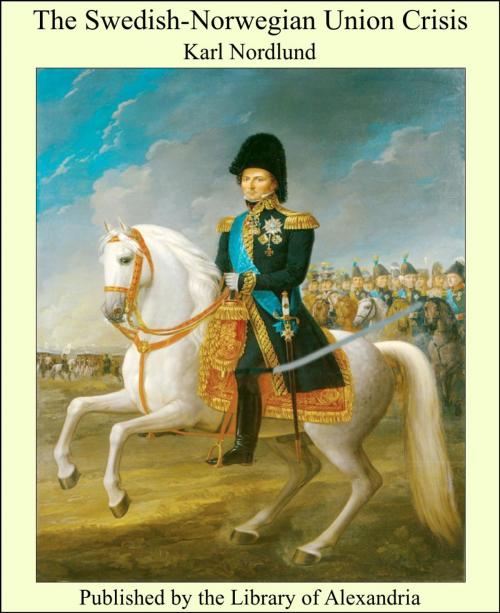The Swedish-Norwegian Union Crisis
Nonfiction, Religion & Spirituality, New Age, History, Fiction & Literature| Author: | Karl Nordlund | ISBN: | 9781465534675 |
| Publisher: | Library of Alexandria | Publication: | March 8, 2015 |
| Imprint: | Language: | English |
| Author: | Karl Nordlund |
| ISBN: | 9781465534675 |
| Publisher: | Library of Alexandria |
| Publication: | March 8, 2015 |
| Imprint: | |
| Language: | English |
Reasons for Union Crisis. Development of Sweden’s and Norway’s different reform programmes [Sidenote: The object of the Union dispute.] [Sidenote: The efforts to give Norway a better position in the Union.] The original cause of the agitating union disputes has been that Sweden, from the very commencement of the Union, has internationally borne the responsibility for the same, in other words, conducted the political affairs of both Kingdoms. The inequality produced hereby, the Norwegians on their part have striven to efface. Sweden has also for a long time shown herself willing to establish full equality in the Union, at the same time that she has accommodated herself to Norway in questions of detail. As far back as 1835 it was acknowledged, on the part of Sweden, that Norway’s position in the Union was not in accordance with the claims of equity. Thus by a Royal Decree that year the Norwegian Minister of State at Stockholm was admitted into the Swedish so-called Ministerial Council to take part in foreign matters which concerned Norway. In 1839 the first great Union-Committee was formed, and both in this one, and two later—the last 1895-98—Norway was offered from the Swedish side complete equality in the Union on certain conditions. Added to this Sweden has on several occasions granted partial concessions. Some have been accepted by Norway—as for instance the law passed in 1844 concerning equality in Government Symbols etc. etc.—others again were refused—as the offer in 1885 and 1891 of increased influence in the administration of Foreign affairs. If offers of equality worded in more general terms are added—as in 1893 and during the present year—, NANSEN’S characterising Sweden’s Union policy as »90 years’ labour to procure a supremacy for Sweden»,—ought to appear in its true colours[2:1
Reasons for Union Crisis. Development of Sweden’s and Norway’s different reform programmes [Sidenote: The object of the Union dispute.] [Sidenote: The efforts to give Norway a better position in the Union.] The original cause of the agitating union disputes has been that Sweden, from the very commencement of the Union, has internationally borne the responsibility for the same, in other words, conducted the political affairs of both Kingdoms. The inequality produced hereby, the Norwegians on their part have striven to efface. Sweden has also for a long time shown herself willing to establish full equality in the Union, at the same time that she has accommodated herself to Norway in questions of detail. As far back as 1835 it was acknowledged, on the part of Sweden, that Norway’s position in the Union was not in accordance with the claims of equity. Thus by a Royal Decree that year the Norwegian Minister of State at Stockholm was admitted into the Swedish so-called Ministerial Council to take part in foreign matters which concerned Norway. In 1839 the first great Union-Committee was formed, and both in this one, and two later—the last 1895-98—Norway was offered from the Swedish side complete equality in the Union on certain conditions. Added to this Sweden has on several occasions granted partial concessions. Some have been accepted by Norway—as for instance the law passed in 1844 concerning equality in Government Symbols etc. etc.—others again were refused—as the offer in 1885 and 1891 of increased influence in the administration of Foreign affairs. If offers of equality worded in more general terms are added—as in 1893 and during the present year—, NANSEN’S characterising Sweden’s Union policy as »90 years’ labour to procure a supremacy for Sweden»,—ought to appear in its true colours[2:1















